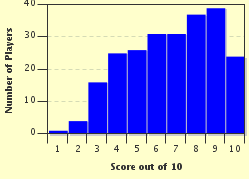Quiz Answer Key and Fun Facts
1. Country of Origin: Italy
Ingredients: Espresso, frothed milk
Meaning "stained" or "marked", what type of Italian "caffè" can be recognized around the world due to the milk that is added to the top of the beverage and often made into various shapes?
2. Country of Origin: Austria
Ingredients: Espresso, egg yolk, brown sugar, whipped cream
This type of coffee is known as "Wiener Melange" in German and originates from Austria. With whipped cream, it is more properly an "espresso con panna", though if you were to order a cup in Vienna, you might have to ask for what item, named after an order of monks?
3. Country of Origin: Cuba
Ingredients: Espresso, demerara sugar
Café Cubano, is of course, Cuban in origin. It is also an espresso-based drink flavored with a special kind of sugar known as demerara sugar. What type of sugar is demerara?
4. Country of Origin: China
Ingredients: Coffee, milk tea
Yuanyang is a coffee beverage that gets the best of both worlds if you like coffee as well as tea, which is flavored with milk. The beverage is especially popular in what semi-autonomous city in China?
5. Country of Origin: Brazil
Ingredients: Espresso, sugar
After entering a shop in Brazil, you may be immediately assaulted with offers of this beverage, which typically comes in a small cup. Literally, the name means "little coffee" in Portuguese. What is it?
6. Country of Origin: United States
Ingredients: Espresso, drip coffee
The name of what highly-caffeinated American beverage comes from the practice of flying across the country from the West Coast to the East Coast?
7. Country of Origin: Ireland
Ingredients: Coffee, Irish whiskey, brown sugar, cream
Irish coffee traditionally doesn't have whipped cream, but many businesses serve the drink with it instead of regular cream. The beverage is meant to be drunk through the cream, and not with a straw or stirred in. What drinkware is it meant to be consumed from?
8. Country of Origin: Turkey
Ingredients: Ground coffee, cold water, (?) mystery ingredient
Turkish coffee begins with finely ground coffee and cold water, then boiled in a "cezve". Sugar can be added during the process, but isn't always. One last ingredient is often added; what type of seedy spice is it?
9. Country of Origin: Ethiopia
Ingredients: Coffee, salt
The most popular species of plant used to make coffee (Coffea arabica) actually originates from Ethiopia, so it is not a surprise that coffee-drinking is a longstanding tradition in the country. "Jabena bunna" is a type of coffee that uses only salt to flavor the drink. Why was salt used instead of sugar in early Ethiopian coffee history?
10. Country of Origin: Germany
Ingredients: Coffee, rum, sugar cubes, whipped cream
This German coffee was invented in 1872 at a baby christening so that a local pastor wouldn't be angry that his adherents were drinking alcohol. The whipped cream on top was meant to keep the aroma of rum from escaping. When the pastor figured out the game, he yelled what Biblical name to the party-goers, which became the name of the beverage?
Source: Author
trident
This quiz was reviewed by FunTrivia editor
WesleyCrusher before going online.
Any errors found in FunTrivia content are routinely corrected through our feedback system.

